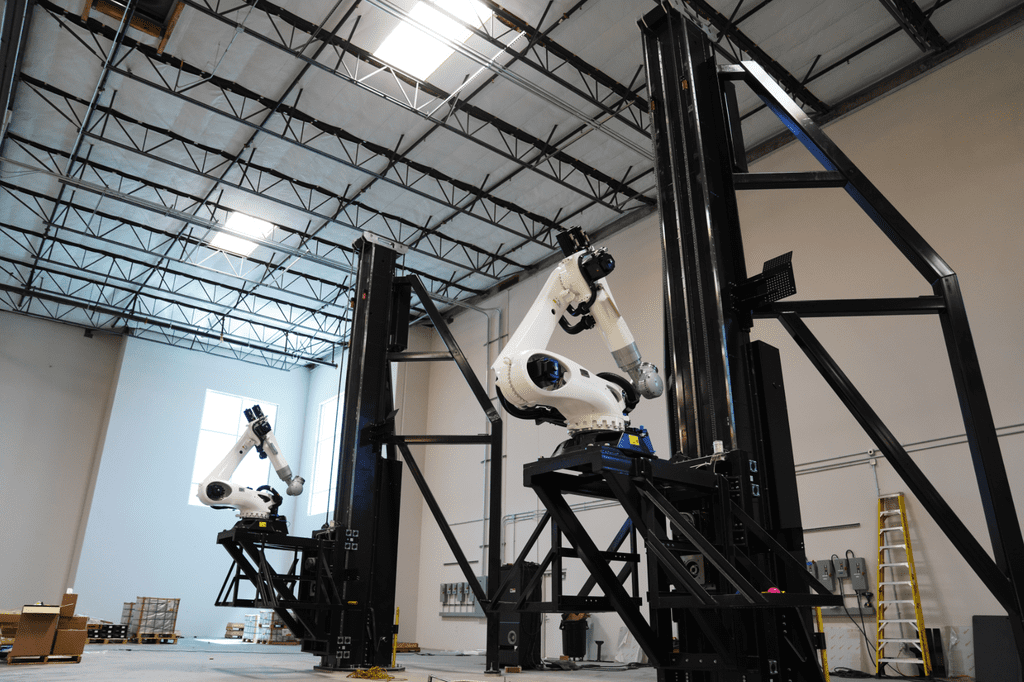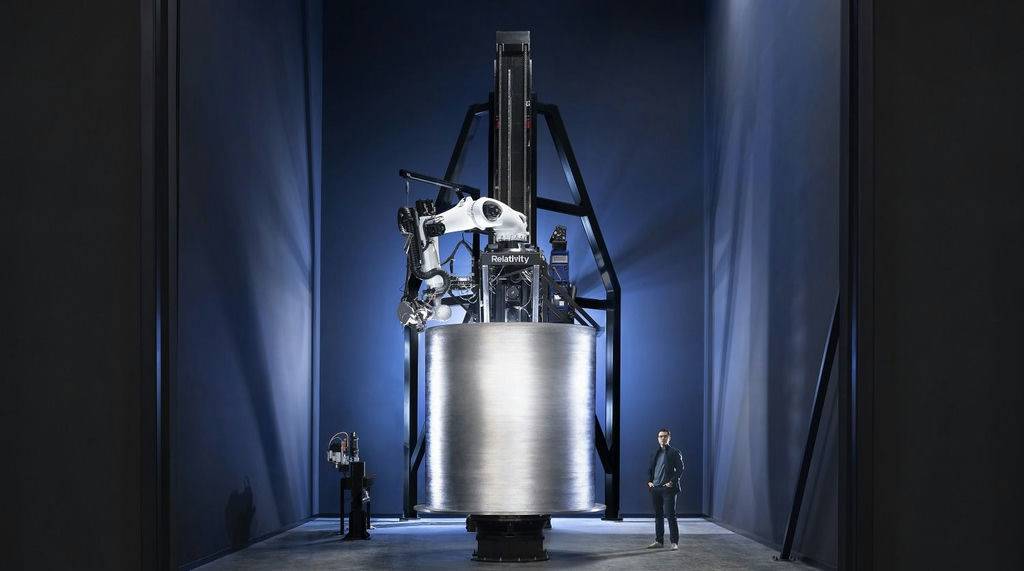Terran 1 – Relativity Space’s rocket’s first iteration is being built. But unlike other rockets, Relativity is using multiple 3D-printers, all developed in-house, to build Terran 1. The rocket is designed to have about 95% of its parts be 3D-printed, which allows Relativity’s rocket to be less complex, and faster to build or modify, than traditional rockets. Additionally, Relativity says its simpler process will eventually be capable of turning raw material into a rocket on the launchpad in under 60 days.
While Relativity had made progress testing its 3D-printing technology, the company’s 120,000 square foot headquarters will serve as the foundation for its manufacturing and launch business. Relativity is now on its third generation of 3D-printers, capable of manufacturing a single piece of metal up to 32 feet tall – as high as the new ceiling allows.
“It’s home base for our efforts for some time to come, as it will allow us to fully produce the Terran 1 rocket,” Relativity’s vice president of factory development Zach Dunn told CNBC. “It’s the factory of the future.”
The company’s new HQ comes with Relativity recently hiring its 200th employee — expansion made possible after raising $140 million last year. Its investors include Social Capital, Playground Global, Y Combinator, Bond Capital, Tribe Capital, Jared Leto and Mark Cuban.
Production underway in the new HQ
Dunn is one of those recent hires, brought on about four months ago after nearly 13 years at SpaceX – most recently the senior vice president of launch and production. Speaking for the first time since he left Elon Musk’s rocket company, Dunn said Relativity has exceeded his expectations.
“We have our engineering offices one door, literally like two steps, away from our engineering area. So the ability to go from your computer and analysis tools to go out and see the hardware means we have a super tight iteration loop, which is great,” Dunn said.

Relativity has kept and upgraded the first and second generation printers it developed. But the new factory means more space, with the company mounting the robotic arms for the third generation printers in July. Relativity now has at least seven 3D-printers in total – and CEO Tim Ellis told CNBC the company has more coming.
“The new printers are operational and actually printing our first flight parts right now, so we have several printers building the first rocket we’re actually going to fly to orbit,” Ellis said. “We’re building our the first stage for our first flight, as well as the second stage which we started a few weeks ago.”
Some of Relativity’s investors have taken a look at the new HQ, Ellis added, with team members from the Bond Capital and Tribe Capital groups visiting recently.
Third generation 3D printers
The factory features five enclosures for Relativity’s new printers, with the only part of Terran 1 that won’t be 3D-printed being its electrical systems.
“Two buckets of raw material come in and then the printers reconfigure that material into a rocket,” Ellis said.

Terran 1 will stand about 115 feet tall on the launchpad, so Relativity is building the rocket in sections and then using a specialized “horizontal conjoining system” to fit the pieces together. That system is essentially another robotic arm that will stitch weld sections together, which Ellis noted can work on two rockets side-by-side.
“The benefit there [with the horizontal conjoiner] is it allows us to run more of these third generation printers in parallel, so we can cut down the total build time of the vehicle,” Dunn said. “We’re able to print on each printer a foot [of metal] a day, so when we’re running on all the printers together we’ll be able to print a rocket in less than a month.”
Earlier this year Relativity verified through a series of pressurization tests that its 3D-printing process would be able to stand up to the intense forces of a launch. Ellis highlighted that the process Relativity uses makes the joints stronger than the rest of the pieces, as its printers make any conjoined sections slightly thicker than the rest.
“Our custom aluminum alloy has been continuously refined and iterated. It’s one of the big advantages of us not selling the 3D-printing systems but being an end user of it,” Ellis said.
Relativity’s all-in approach to 3D-printing has raised skepticism from other rocket builders, which all use additive manufacturing to at least a limited degree. Ellis pointed to data from DARPA, the Defense Advanced Research Projects Agency, that showed the aerospace industry is “still using the same fundamental manufacturing toolset in production and design and development approaches that we were 60 years ago.”
“Compared to other industries [such as automobile manufacturing], DARPA data that shows aerospace is actually going the other direction, with the time to design, develop and iterate a new product actually being slower today than it was 60 years ago,” Ellis said. “History will be the best indicator, but I think where other people are wrong is by just not thinking with enough vision of what the future looks like.”
Ellis has been looking to make good on his vision since co-founding Relativity five years ago. And Dunn, with a decade of experience building the most frequently launched U.S. rockets, echoed his new boss.
“Using additive manufacturing for aerospace applications, for rocket applications, is the real deal. It absolutely can and will work,” Dunn said.
Realtivity’s Terran 1 rocket has just 730 individual parts – about 100 times less than the typical rocket. The reduced complexity also brings with it the ability to quickly make changes and upgrades as Relativity begins launching.
“Not only will we be able to build a rocket in 60 days, but 60 days later we’ll be able to do a better version. And each version we make, we’ll optimize the mass to make it lighter and cheaper and faster for us to produce,” Ellis said. “This is a completely rewrite of the value chain and I think that’s why people are kind of missing it – they’re looking at it as a manufacturing technology. But it’s really an entirely new way to build, design, and develop a product that’s driven by software.”



